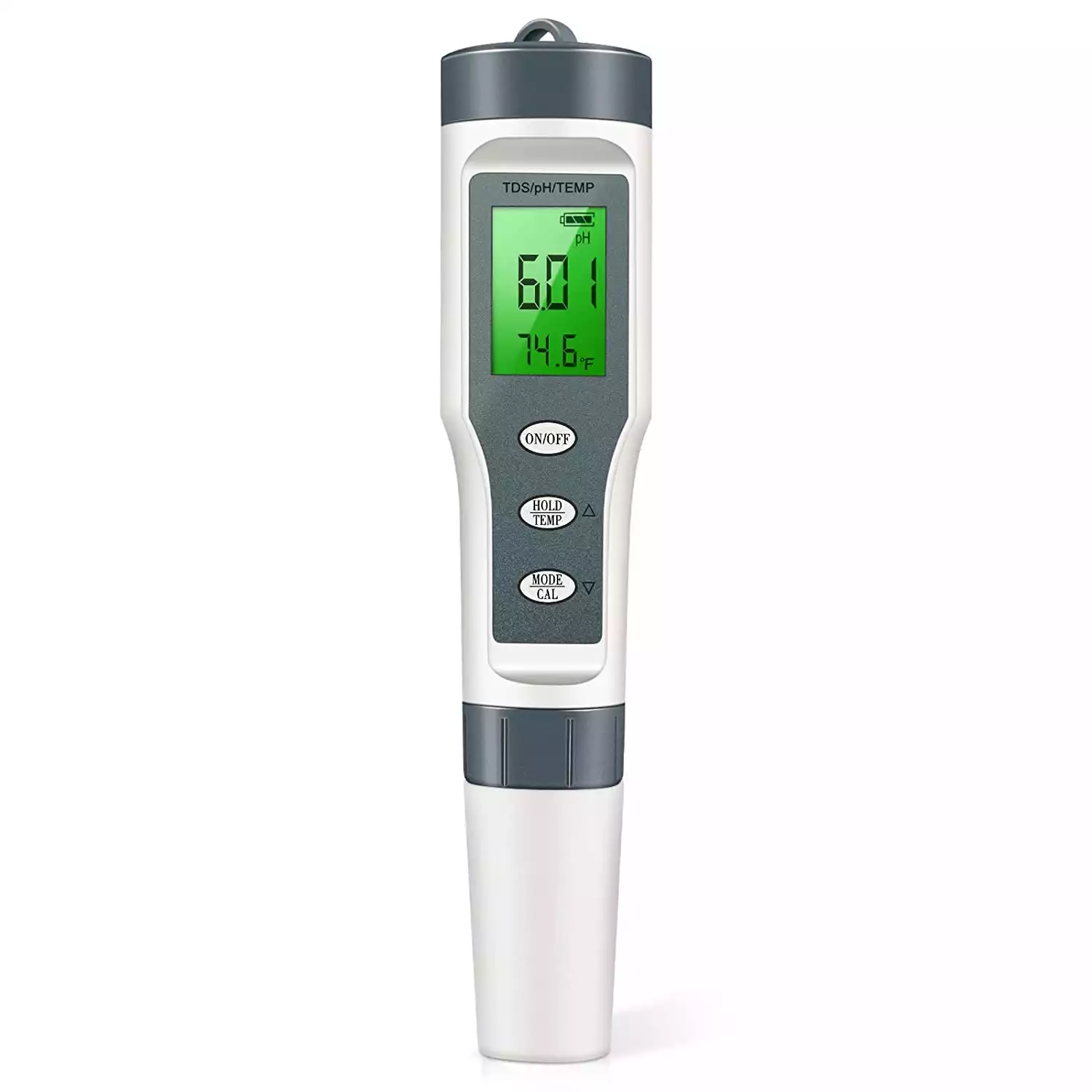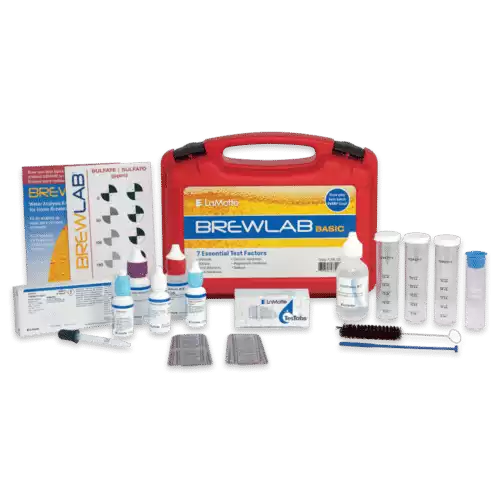Hefeweizens have been brewed throughout southern Germany and have been produced with a number of different water profiles. However, this style can be highlighted with carefully curated mineral content to make its flavors pop.
The ideal water profile for Hefeweizen contains a slightly lower mineral content than is typically expected for brewing. That said, you’ll want to include calcium to balance the pH as well as chloride and sulfates to highlight the aromas from the malt and hops in the beer.
Read on to learn about water quality as it relates to brewing hefeweizen, and for a more in-depth explanation of the mineral and pH for the style.
Topics We Cover
What is the ideal water profile for Hefeweizens?
While there are countless opinions online about the ideal water profile for the perfect hefeweizen, the truth of the matter is that water composition is largely a matter of taste. That being said, there are a few important principles that will give you more control over the final flavor of your beer.
The pH of your water is essential for promoting yeast health in your mash and developing the flavors hefeweizens are known for. Additionally, you’ll want to pay attention to your water’s mineral content. CaCl salts can balance the pH and highlight malty aroma. Be cautious with sulfates though, since they can bring out the bitter hoppiness in the typically mild hefeweizen.
Should you use a certain city’s water profile for Hefeweizens?
When choosing a water profile for a beer, many homebrewers recommend selecting the water profile of the city or region where it was originally brewed. The idea is that by tailoring your water’s pH and mineral content to match your beer’s location of origin, your final beer will be as authentic as possible.
But this tactic doesn’t work so well for styles, like hefeweizen, with a historically wide geographic range.
Originally brewed in Bavaria, hefeweizen and similar wheat beers were outlawed by the Bavarian beer purity laws that required beer to be made exclusively from water, barley, and hops. Hefeweizens lived on though, as the style spread through Southern Germany into Austria and the Czech Republic.
Even if you randomly picked a city where hefeweizen might have been brewed, it’s important to recognize that historically breweries would alter the water used for beer just as we do today. So tailoring your water profile to resemble tap water from a European city might be the wrong choice both in terms of flavor and authenticity.
What is the ideal pH level?
The ideal pH for brewing lies between 5.2 to 5.6. That said, hefeweizens are a prime candidate for a technique known as acid resting.
This method requires that the wort be prepared at a higher pH, somewhere around 5.7 to 5.8, and then allowed to rest between 109 and 113 degrees fahrenheit. At this higher pH and temperature range, two important chemical reactions take place:
- Ferulic acid, the chemical responsible for producing the clove-flavored 4-vinyl-guaiacol hefeweizens are famous for, is released into the mash in large quantities.
- The enzyme phytase breaks down a molecule called phytin found in malt. The phytin is decomposed into calcium, magnesium phosphate, and phytic acid, which collectively lower the pH to the desired 5.2 to 5.6 range.
While an acid rest can be tedious, it can produce an outstanding hefeweizen even with water with negligible mineral content.
Use this waterproof 3-in-1 pH meter to check the acidity of your brewing water. Automatic temperature control corrects hot water samples during brew day!
What’s the ideal mineral content?
If you choose to forgo an acid rest, you will need to be more specific about the mineral content in your water.
Water with a high mineral content, also known as hard water, can be great for brewers but is usually avoided in tap water since it can calcify inside pipes. Even if you happen to have hard water at home, you’ll want to analyze the exact contents since different minerals will affect your beer in different ways.
Some common ions found in hard water include:
- Calcium
- Lowers pH
- Clarifies beer by helping proteins precipitate
- Promotes yeast health
- Magnesium
- Promotes yeast health
- Sodium
- Can accentuate the flavor of beer
- Chloride
- Promotes a rich and sweet malty finish
- Sulfates
- Highlights hoppy bitterness
- Metals like Iron and Manganese
- Responsible for unpleasant metallic off-flavors
Hefeweizens will benefit from at least 50 mg/L Calcium and 10 mg/L Magnesium, anywhere from 10 to 70 mg/L Sodium. Be cautious with sulfates, since this style is very lightly hopped and can be easily overpowered; aim for about a one-to-one ratio of sulfates and chloride at roughly 100 mg/L.
Finally, make sure to avoid metals and other contaminants as they could negatively affect the final flavor profile of your beer.
By the way, this article is part of an entire series on Hefeweizens. To learn more, check out my articles on the best yeast to use with Hefeweizens, how to brew Hefeweizens, and the best Hefeweizens to try in 2022.
How do you find your water profile?
If you are wondering how to find the pH and mineral content in your home’s tap water, there are a few easy ways to check, including:
- Using a home testing kit, like the LaMotte BrewLab available here;
- Getting your water tested by a certified drinking water lab; or
- Asking your town’s water department for the most recent water quality report.
The most accurate way to test your water quality is to get it tested by a professional or with a home water testing kit. If you’d prefer a quick reference, you can also ask your town for the most recent readings from your local water supply.
This kit was formulated specifically for testing beer used for brewing beer, includes everything you need, and will last for years!
How important is the water profile in brewing?
Beer is 90% water, and the contents of brewing water can have a significant impact on the flavor profile of your finished product. The pH, mineral content, and any potential contaminants are important factors to be aware of when brewing beer at home.
When determining whether or not your water is suitable for brewing, try to remember why each of the following factors is important.
- Mineral Content can greatly affect the flavor profile of your finished beer. Free ions can highlight certain aromas but may also ruin your beer with a metallic or bitter flavors.
- pH is an essential factor for proper enzymatic functions during the brewing process. A high pH can lead to harsh flavors, while low pH can induce spoilage.
- Chemical or Biological Contamination is the most dangerous aspect of water quality. If water is unsafe to drink for any reason, it should never be used for brewing.
How do you adjust your brew water profile?
Though it may seem simple, the easiest way to adjust your water profile is by simply adding minerals to your water until it matches your desired profile.
Adding minerals to your water is a safe and easy way to adjust the mineral content of your tap water. Minerals are available in tablets, powders, and liquid tinctures, all of which can be easily added to your water. Tablets should be crushed into a powder before being mixed in; pre-ground powders and tinctures can be added directly.
What is the best water to start with for hefeweizens?
Because hefeweizens are traditionally made from softer water than other styles of beer, your best bet is to start with distilled water and add minerals to produce your ideal mineral content. But if you don’t have access to distilled water, it’s okay to start with tap water and alter the composition.
Hefeweizens have traditionally been brewed with hard and soft water, so your water profile will largely depend on how you plan to brew your beer.
High pH, soft water was used throughout the Pilsen region using an acid rest to control the pH without adding additional minerals to the mash. This is probably similar to the water that will come out of your tap, since municipal water departments prefer soft water to avoid mineral buildups in a city’s pipes.
But if you are looking for a precise mineral and pH reading for your water, it is always easiest to start with reverse-osmosis distilled water, since you won’t be able to remove unwanted minerals from your tap water using a typical home filtration system.
What to add to RO or distilled water to make a hefeweizen
Assuming no acid rest, the perfect water profile for hefeweizen will feature enough calcium to balance the pH, an approximately 1-to-1 ratio of chloride and sulfate, and a touch of magnesium and sodium to round out the flavor.
Here’s are the approximate amounts of each mineral you’ll want to add to your distilled water, based on my own research and the experiences of other homebrewers, Just remember that you’ll have to do your own experimentation to find the exact water quality that will provide the best flavor for your taste!
- Ca At least 50 mg/L (but no more than 150 mg/L)
- Mg About 10 mg/L
- Na Between 10-70 mg/L
- Cl Roughly 100 mg/L
- SO4 Roughly 100 mg/L
What makes a good Hefeweizen?
It takes a little more than good water to brew the perfect hefeweizen. A few other characteristics that define the style include a wheat-forward malt, light hops, heavy yeastiness, and plenty of banana and clove-scented esters developed during decoction and optional acid rest.
Malt
Hefeweizens are required to contain at least 50% wheat in their mash. The high wheat content is associated with a few typical characteristics seen in hefeweizens, including:
- Haze from malted wheat proteins;
- Creamy Body and a long lasting head supported by those same proteins; and
- Bright, Citrusy Flavor balanced by aromatic yeast.
Hops
Low hopping rate lets the pilsner wheat and esters shine through.
There is little to no bitterness or hop presence producing an extremely drinkable beer. Hefeweizens traditionally use German hops, like Hallertau, Spalt, Tettnang, Perle, Magnum or Tradition. If you have trouble finding those, Liberty or Mount Hood can be a good substitute.
Esters
Through decoction and an optional acid rest, hefeweizens can develop large amounts of 4-vinyl-guaiacol, the molecule responsible for the style’s distinctive clove, banana, and mild bubblegum flavor.
And one piece of advice: be sure to drink your hefeweizen fresh, since these distinctive esters will degrade over time.
Check out the web story of this article!



